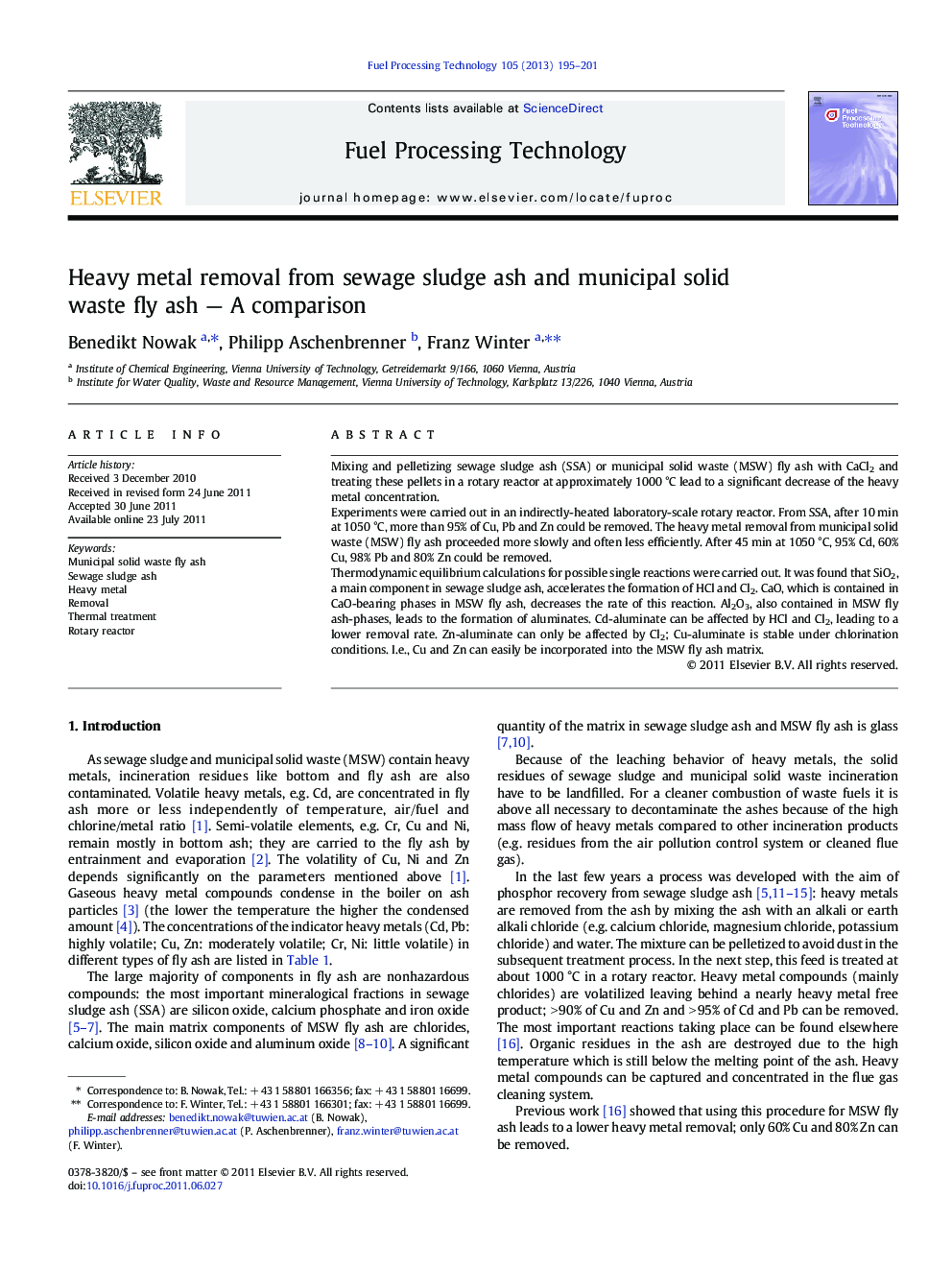| Article ID | Journal | Published Year | Pages | File Type |
|---|---|---|---|---|
| 210353 | Fuel Processing Technology | 2013 | 7 Pages |
Mixing and pelletizing sewage sludge ash (SSA) or municipal solid waste (MSW) fly ash with CaCl2 and treating these pellets in a rotary reactor at approximately 1000 °C lead to a significant decrease of the heavy metal concentration.Experiments were carried out in an indirectly-heated laboratory-scale rotary reactor. From SSA, after 10 min at 1050 °C, more than 95% of Cu, Pb and Zn could be removed. The heavy metal removal from municipal solid waste (MSW) fly ash proceeded more slowly and often less efficiently. After 45 min at 1050 °C, 95% Cd, 60% Cu, 98% Pb and 80% Zn could be removed.Thermodynamic equilibrium calculations for possible single reactions were carried out. It was found that SiO2, a main component in sewage sludge ash, accelerates the formation of HCl and Cl2. CaO, which is contained in CaO-bearing phases in MSW fly ash, decreases the rate of this reaction. Al2O3, also contained in MSW fly ash-phases, leads to the formation of aluminates. Cd-aluminate can be affected by HCl and Cl2, leading to a lower removal rate. Zn-aluminate can only be affected by Cl2; Cu-aluminate is stable under chlorination conditions. I.e., Cu and Zn can easily be incorporated into the MSW fly ash matrix.
► We compared heavy metal removal from sewage sludge ash and MSW fly ash. ► The ashes are mixed with CaCl2, pelletized and thermally treated (ca. 1000 °C). ► Heavy metal removal from sewage sludge ash proceeds faster and to a higher degree. ► Al2O3 from MSW fly ash leads to the formation of stable Cu and Zn aluminates.
